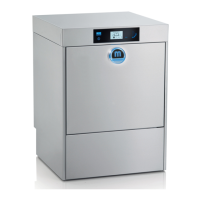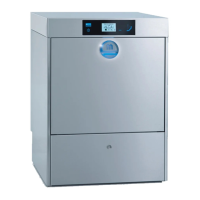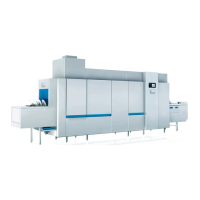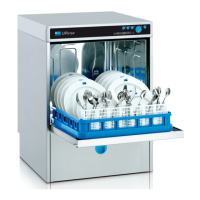9712938 25 / 68
Design and construction subject to change without prior notice!
7.1.5 Requirements to the electrical connection
Warning
Danger to life from electric shock
Contact with live electrical parts can lead to serious injury or death.
• Work at or repairs to the electrical system must be conducted by a qualified
electrician who complies with the electrotechnical rules.
• Disconnect the machine from the power supply before working on the electrical
system. To do this, turn the local mains switch to OFF and ensure that it can't
be switched back on again.
Note
The wiring diagram is located behind the front panel of the dishwashing machine.
This must remain in the machine!
To ensure that the appliance can be connected, the following has to be pro-
vided by the customer:
The correct voltage and type of current must be available.
The power supply must be safeguarded in accordance with the regulations and a
main switch provided in the fixed electrical installation.
If an unearthed neutral conductor (N) is used with three-phase current, the power
disconnection device must have 4 poles (with alternating current 2 poles).
The dishwashing machine must be connected to a potential equalisation system!
If the neutral line (N) is not earthed, you must use a 4-pin mains switch. Mains
power cables must be oil-resistant, shielded cables no lighter than an H07RN-F ca-
ble.
A 5-pole terminal strip (L1, L2, L3, N, PE) must be used for connection to a three-
phase current.
Electricity supply without a neutral conductor (N): when connecting to three-phase
current, use a 4-pole clamping strip (L1, L2, L3, PE).
Conductor colours: live conductor L1 = black/1, L2 = brown/2, L3 = grey/3, neutral
conductor N = blue/4, ground wire conductor PE = green-yellow
The potential equalisation connection must be carried out in accordance with the
requirements of the local electricity supply companies and all applicable local regula-
tions (in Germany VDE 0100 Part 540 must be observed).

